
St Fagans National Museum of History, Wales
Museum redevelopment
Initial workshops and Concept design 2012-13
(while at Event Communications)
A new model for history museums in the twenty-first century.
Perhaps my favourite project during my five years at Event. The client team were inspirational, and they continue to push St Fagans into new territory in terms of a museum’s public purpose, ‘where everyone is invited to be a part of the story’.
Step one: Taking a step back, in order to run forwards in the right direction. Working with another design company, the St Fagans team had arrived at a scheme that they were not fully happy with. Following a successful pitch to refocus the project, talking to the client team it was clear that there were some fundamental questions that had not been previously resolved, resulting in the lack of a strong foundation for the work to be built upon.
I suggested we take a step back and run some workshops to look at the bigger picture of what the museum was all about – what the ethos and context was for the gallery development that was being asked for – in order to clarify the creative briefs. Working with the team through what were in effect a series of visioning and branding workshops helped to set some strong foundations for what an appropriate stance would be for interpretation and the nature of the visitor experience. It also gave the client team renewed enthusiasm and ownership of the new scheme.
I used key words, phrases and simple diagrams to capture the essence of what was being proposed. These played an important role in managing complex issues as well as acting as a sense check as ideas developed.
A key idea that emerged from these workshops was for St Fagans to regain a sense of being ‘radical’ – in a sense rekindling its radical spirit from its founding in 1948. This, together with a strong ethos of being participatory and including multiple voices, steered the development towards a more human-centred rather than collections-led approach.

Workshop material – Vision, mission, mandate, etc
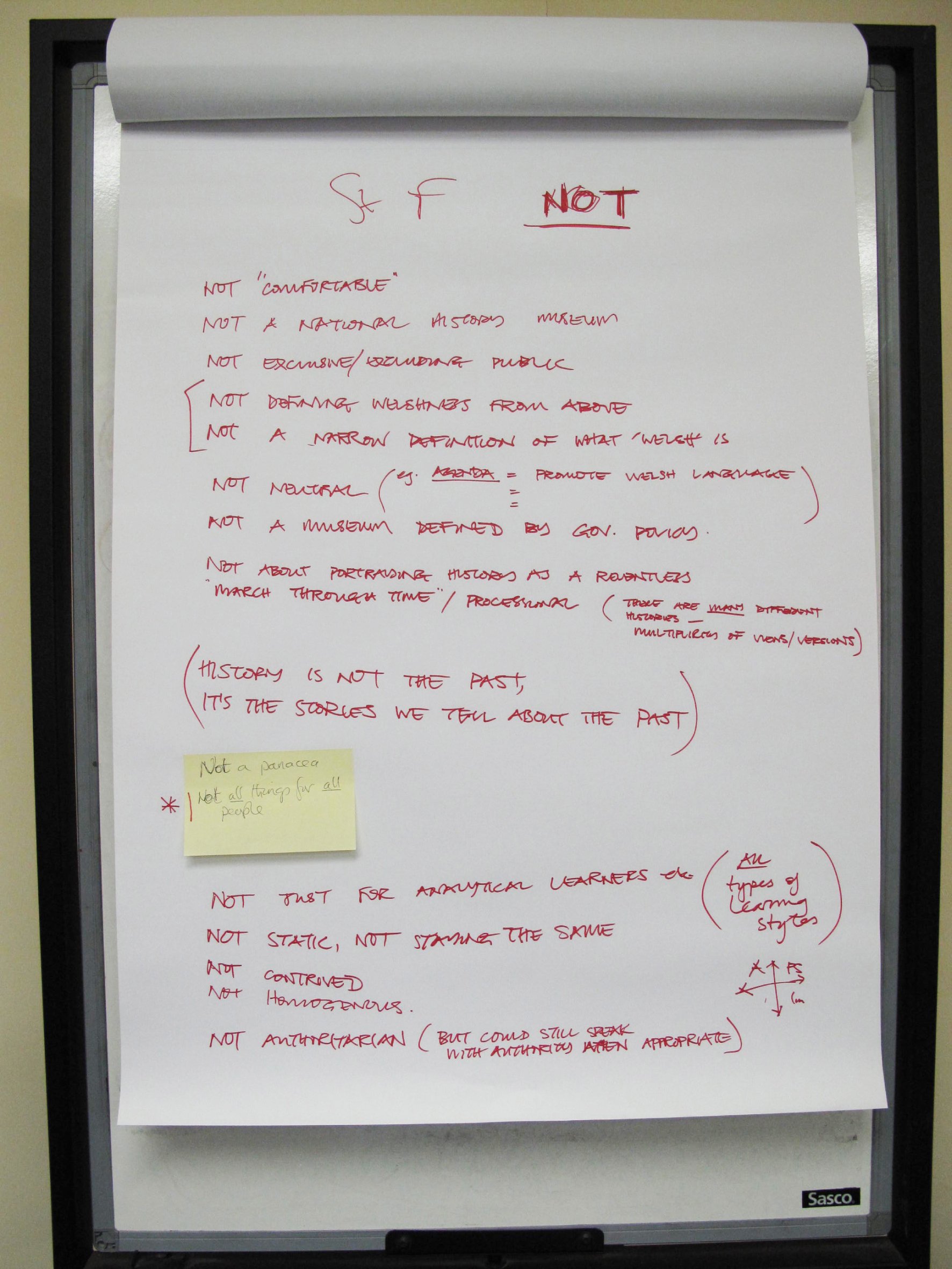
Workshop material – What we're not

'From... To...' diagram
To help bridge interpretation and design I proposed a simple descriptive framework, following a visitor journey experience, which started with the phrase ‘Walk in and immediately get a sense of...’ So, for example, the Wales is gallery was originally conceived as: Imagine walking into a gallery and immediately getting a sense of people – their voices, thoughts, opinions, debates, stories, memories. A vertical field of focal points, punctuating the length of the gallery, upon closer inspection might reveal a horizontal depth of supporting stories to discover, ‘unlock’, and contribute your own thoughts and stories to.

From an idea of opinions flowing around and through displays...

Wales is... People, opinions, objects.

Early layout workings for 'Wales Is'
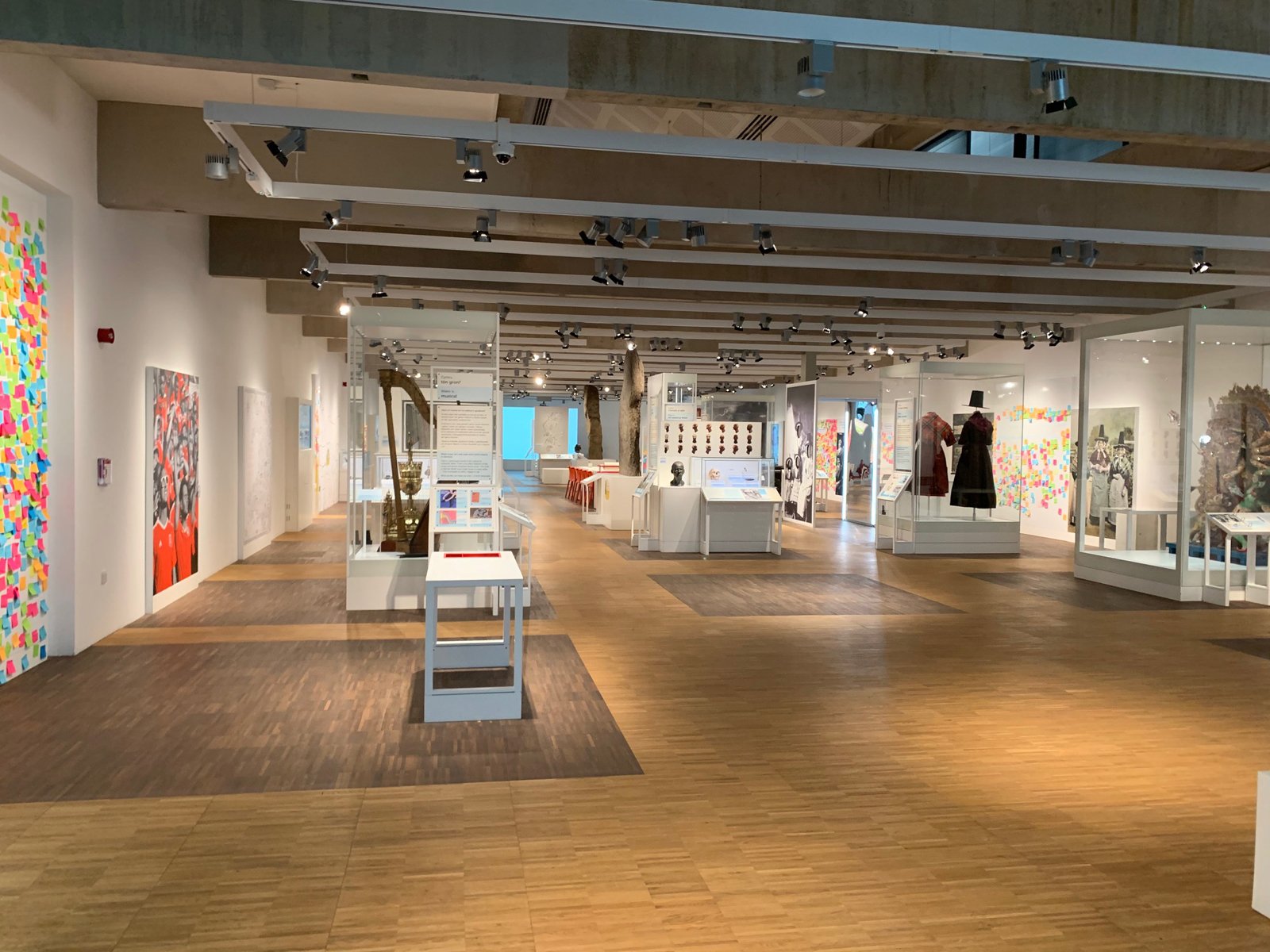
Image credit: Miriam Dafydd
Similarly, the Life is gallery: Imagine walking into a gallery and immediately getting a sense of people’s everyday life – a familiar recognition of people working, relaxing, playing, that on closer inspection reveals a comparison of people’s lives over a surprising depth of time. A window into the lives of the people of Wales, past and present. Four key words would underpin the gallery proposition: curiosity, comparison, challenge (not being afraid of uncomfortable truths about people’s lives) and contribution (including collecting data). Also, the idea that history is as much about the small details of people’s daily existence as it is about the big events.

Gweithdy – From motivation to final use.

Layering the display

Hybrid display and work bench
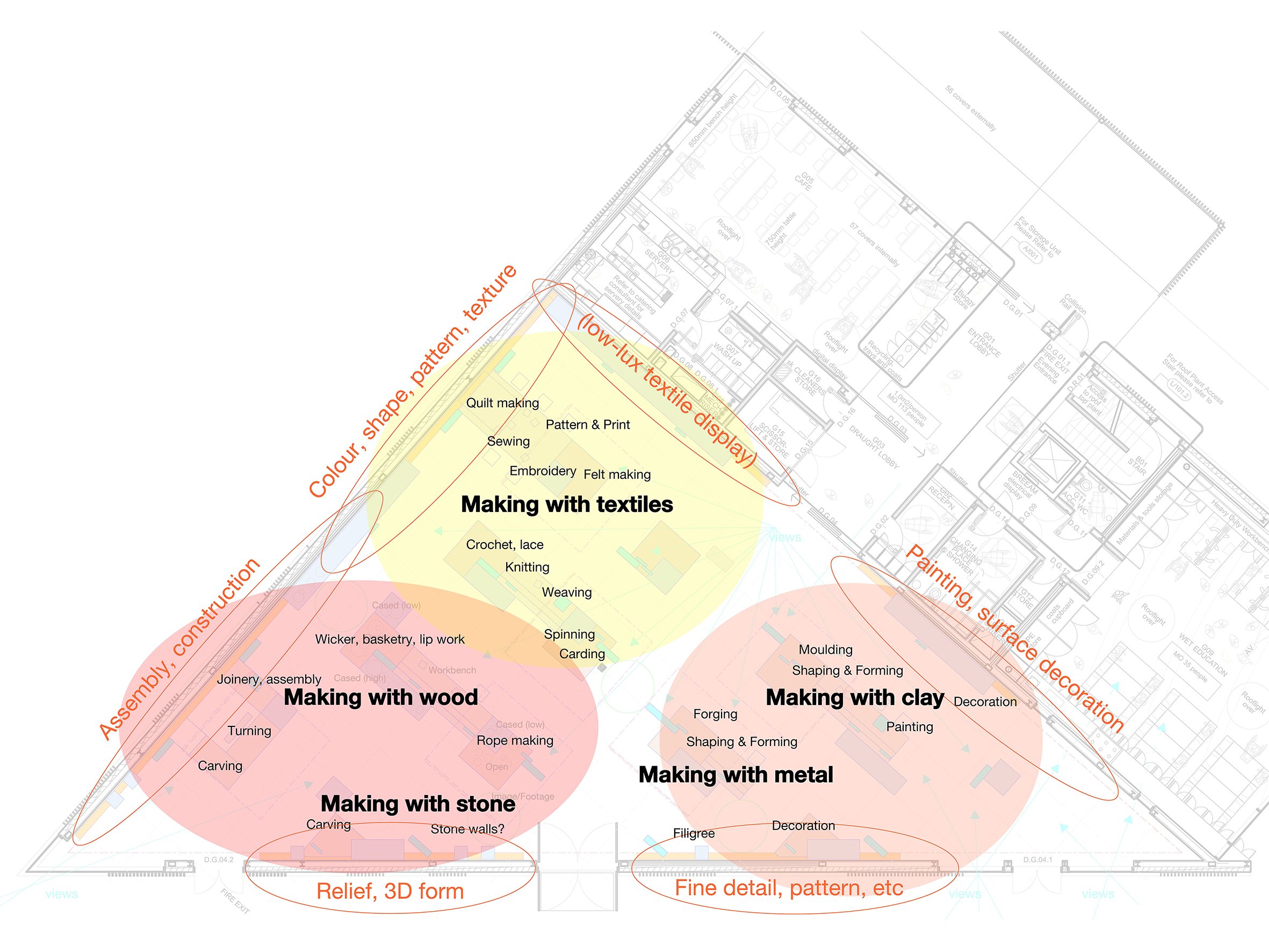
Early bubble diagram
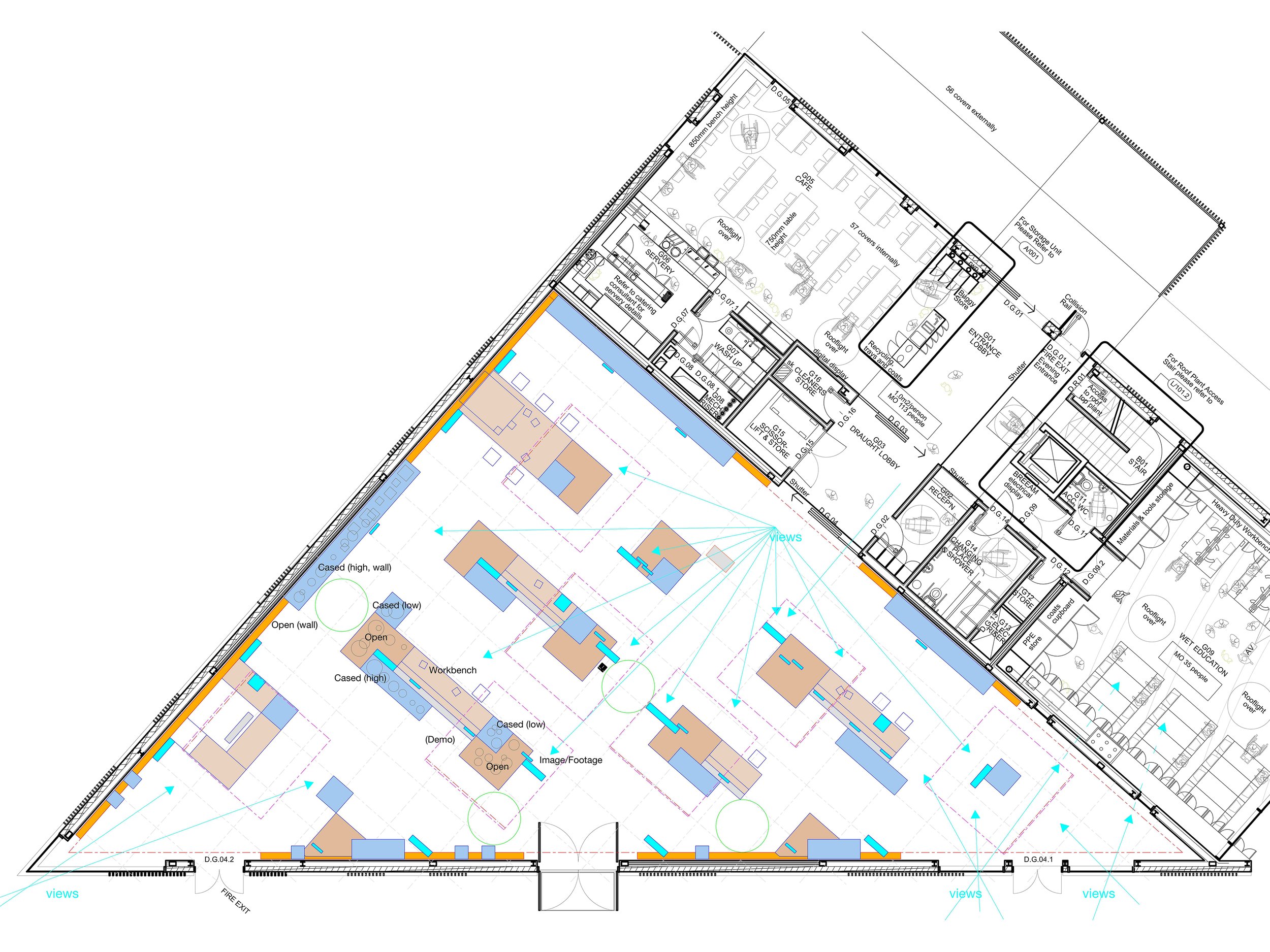
Early layout test
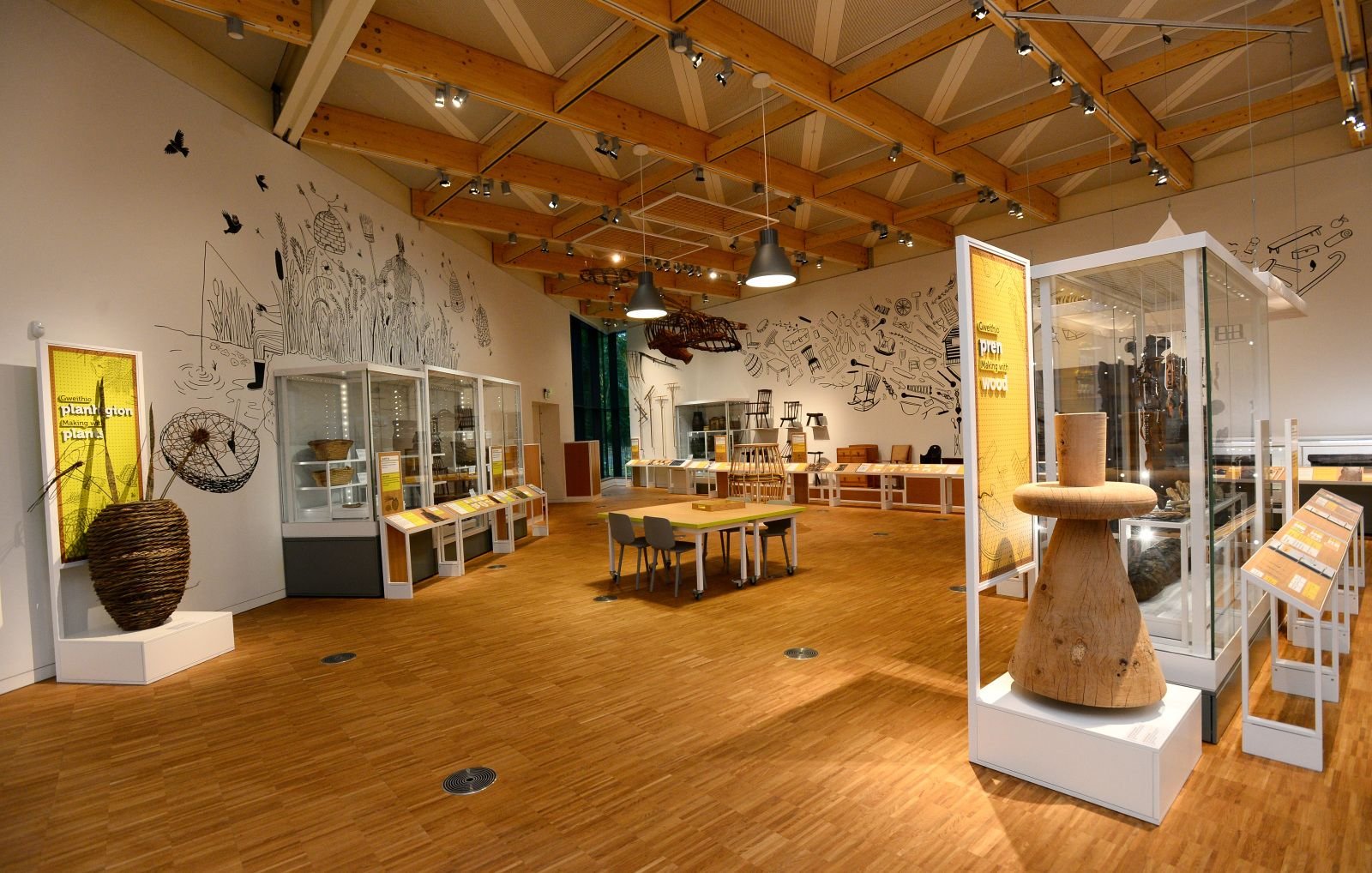
Image credit: St Fagans
And for the Gweithdy gallery – ‘Get motivated to make!’: Imagine walking into a gallery and immediately getting a sense of walking into ‘a world of making’. A gallery showing the full spectrum of making: from the initial motivations to make to the end usage of the things made. Celebrating the skills of the makers of artefacts in the museum’s collections and encouraging visitors to learn these skills for themselves. A celebration of people and process, rather than a display of finished objects. An active space, not static. Hands-on and tactile, not observation of objects behind glass. A space that gets you motivated to give it a go and make something.
The St Fagans redevelopment was completed in 2018 and won the Art Fund Museum of the Year Award in 2019.
“Being able to walk into historic homes, crossing the threshold and back into a historic Wales has always been possible at St Fagans. What has changed since its redevelopment is the ability of the past to talk to us, in the present, and impact our lives through the democratisation work conducted by the Museum. Seldom have I experienced such an opportunity to reflect on both past and present in a pertinent and important-seeming way as the interactive debates in Wales Is. Many working in museums will also appreciate the ability of Life Is not only to make past stories feel relevant to contemporary lives, but to represent all kinds of lives experienced now, and in the past.”
— Miriam Dafydd, Science Museum Group Journal